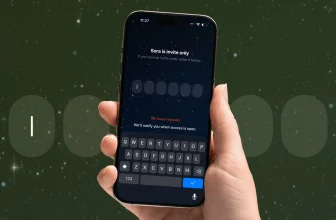Time Machine is a reliable macOS feature for automatic backups, but sometimes it may fail to locate the backup disk. This issue can disrupt your data protection routine. In this article, we’ll explore common causes and provide practical solutions to help you reconnect your backup disk and resume seamless backups.
All Possible issues & Solutions are given in the table below
| Issue | Description | Possible Cause |
|---|---|---|
| Disk Not Connected | The backup disk doesn’t appear in Finder or Time Machine | Unplugged, loose cable, or power failure |
| Disk Not Mounted | Disk is connected but not mounted in macOS | Disk needs to be mounted manually via Disk Utility |
| Incompatible Format | Disk is formatted in an unsupported file system | Disk must be APFS or Mac OS Extended (Journaled) |
| Network Drive Not Found | Time Machine can’t locate a network-based backup | Network issues, router/NAS problems, or different Wi-Fi |
| Incorrect Time Machine Settings | Wrong disk selected or settings misconfigured | Backup disk deselected or misconfigured in settings |
| Software Conflicts | Apps or system services block access | VPN, firewall, or security software interference |
| Corrupted Backup Disk | Disk is detected but unreadable or corrupted | Disk needs repair using Disk Utility or may require reformatting |
| Outdated macOS | Compatibility issues with older OS versions | Update needed for proper Time Machine functionality |
Solution #1. Check Basic Connections
- Ensure the backup disk is properly connected to your Mac computer. Sometimes, a loose connection makes it impossible to detect the storage drive on an Apple laptop or PC.
- The second thing is that you have to verify cables (USB, Thunderbolt) or the network (for NAS). Please don’t use the damaged cable, as it harms your device.
Solution #2. Make Sure the Disk Is Powered On
- External drives must be powered or charged. You may don’t know that the external drive power
- Check if lights or activity indicators are showing.
Solution #3. Ensure Disk Is Mounted
- Check Disk Utility to see if the disk appears.
- Mount the disk manually if it’s not showing on the desktop.
Solution #4. Verify Finder Preferences
- Make sure external disks are set to show in Finder.
- Check if the disk is hidden or inaccessible.
Solution #5. Check Time Machine Settings
- Go to System Settings > Time Machine.
- Re-select the correct backup disk if needed.
Solution #6. Check Disk Format Compatibility
- Disk should be formatted as APFS or Mac OS Extended (Journaled).
- Reformat if necessary (after backing up data).
Solution #7. Restart Mac and Backup Disk
- Restart both devices to refresh connections.
Solution #8. Update macOS
- Check for and install any system updates.
- Compatibility issues may be resolved with updates.
Solution #9. Check Network (for Network Disks)
- Ensure both Mac and NAS are on the same network.
- Restart the router or NAS if necessary.
Solution #10. Turn Off VPN or Firewall Temporarily
Solution #11. Reset Time Machine Preferences (Advanced)
Delete Time Machine plist files. Here are the steps to delete Time Machine .plist files (preferences) in list view on your Mac:
- Open Finder.
- Click on “Go” in the menu bar.
- Select “Go to Folder…”
- Enter the path:
~/Library/Preferences - Click “Go” to open the folder.
- In the list view, find the following files (if they exist):
com.apple.TimeMachine.plistcom.apple.TimeMachineLauncher.plist
- Drag them to the Trash.
- Empty the Trash to permanently remove the files.
- Please restart your Mac to allow the system to recreate fresh preference files.
After doing this, Reconfigure Time Machine settings.
Solution #12. Run First Aid in Disk Utility
- Check for and repair disk errors. To do so, read this article on how to run first aid.
Solution #13. Check for Multiple Time Machine Disks
- Conflicts can occur with more than one backup disk configured.
Solution #14. Contact Apple Support
- When all else fails, it may be a hardware issue. In such a case, you must contact Apple support. Watch the video below on how to start a chat with Apple support.







